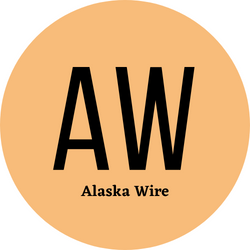How to Deal with Your Chew-Happy Dog, A Guide from Sierra Canine

Training a canine can be challenging but if you trained your dog well, it could be such a rewarding and fulfilling experience. But what do you do when your beloved furry friend begins to chew on everything in the house? Chewing is a natural instinct for dogs, especially puppies. They often use their mouths to explore the world around them. However, when your dog starts chewing up shoes, furniture and anything else he can lay his paws on, it can become a frustrating and costly exercise. In this post, Sierra Canine would like to give you some expert tips and training on what to do if you have a chew-happy dog.
Dog-proof your home
The first step in managing a chew-happy dog is to dog-proof your house. Ensure that all items that can be easily destroyed or swallowed, such as shoes, socks, electrical cords, and small objects, are stored out of reach. You can also use bitter apple spray or other pet deterrents on furniture and other areas your dog likes to chew on or eat. Moreover, limit your dog's access to certain areas of the house and keep him confined to a puppy-proofed room when left alone. It will help prevent unwanted accidents and property damage.
Provide suitable toys
It’s essential to have toys that your dog will want to chew on. Purchase safe chew toys made explicitly for dogs. Select a toy that your dog can chew on and not easily destroy. If the chew toy is too small, it can become a choking hazard. Likewise, if it's too big, your dog might lose interest in it. Be sure to provide variety in his toys and supervise the playtime to avoid potential accidents.
Teach proper chewing behavior
Training dogs to have positive chewing behavior requires time, repetition and structure. Redirect your dog's attention towards the appropriate chew toys when he starts nipping on objects that are off-limits. Reward him with praise or treats when he listens to your commands. Furthermore, provide positive reinforcement when your dog chews on items he's meant to chew. Consistency is key when it comes to training.
Exercise
Daily exercise is crucial for a dog's physical and mental health. Walking your dog outside allows him to explore and discover new scents and environments. Tired dogs are less likely to get into mischief or destructive behaviors, including chewing. Furthermore, it's essential to provide stimulating activities such as fetching and hide-and-seek. Playtime outside can help with your dog's chewing behaviors while providing the exercise and stimulation he needs.
Consult with a professional
If your dog's chewing behavior persists, consult with a veterinarian or professional trainer. They can evaluate your dog's behavior and provide expert advice and training. Additionally, some dogs may need assistance with anxiety or other underlying issues that may contribute to the behavior. A professional can help identify any possible triggers and offer solutions tailored to your dog's individual needs.
Chewing is a normal and necessary behavior for dogs, but when your dog chews up your favorite pair of shoes or the sofa, it can become frustrating and even dangerous for your furry friend. With these expert tips and training from Sierra Canine, you can help manage your dog's behavior and save your property. Remember to dog-proof your house, provide suitable toys, teach proper chewing behavior, exercise, and consult with a professional to address any underlying issues. With patience and consistency, you and your pup can enjoy a happy and peaceful home!
Training a canine can be challenging but if you trained your dog well, it could be such a rewarding and fulfilling experience. But what do you do when your beloved furry friend begins to chew on everything in the house? Chewing is a natural instinct for dogs, especially puppies. They often use their mouths to…
Recent Posts
- Experience Unmatched Quality and Reliability with Under One Roof’s Roofing Services
- Transform Your Home with Expert Cabinet Painting and Refinishing by California Cabinet Finishes and Refacing in Austin, TX
- Affordable Fencing Solutions: Fence Company Rochester NY Offers Insight on the Cheapest Fence Installations in Rochester, NY
- Expert Roofers Columbus Shares Insights on the Roofing Installation Process in Columbus, GA
- Exploring the Drawbacks of Duct Cleaning: Insights from Air Vent Cleaning Charlotte
